Heading into the regular season, a prominent topic of discussion for the Buffalo Bills regarded their switch at offensive coordinator from Brian Daboll to Ken Dorsey. Daboll faced his fair share of criticism while in Buffalo, but appeared to be instrumental in the development of Josh Allen into an elite QB.
Now, after a full NFL season, Daboll is the favorite to win Coach of the Year for his work with the New York Giants, while the Bills were eliminated in embarrassing fashion against the Bengals, where Dorsey’s offense scored just 10 points. Before jumping to any conclusions about the state of the offense under their new play caller, let’s take a look at a side-by-side comparison of Daboll’s offense in 2021 vs Dorsey’s offense in 2022.
Also, before you can compare the offensive stats for 2021 vs 2022, it needs to be taken into consideration that there was a discrepancy in the number of games for each team. Because of the events in Cincinnati regarding Damar Hamlin leading to a no contest, 2022 has a 16 game sample size, while 2021 has a 17 game sample size. To resolve this, I’ve adjusted all stats to a per-game rate, to lead to a more even comparison.
[Note: All stats are courtesy of Pro-Football-Reference and StatMuse].
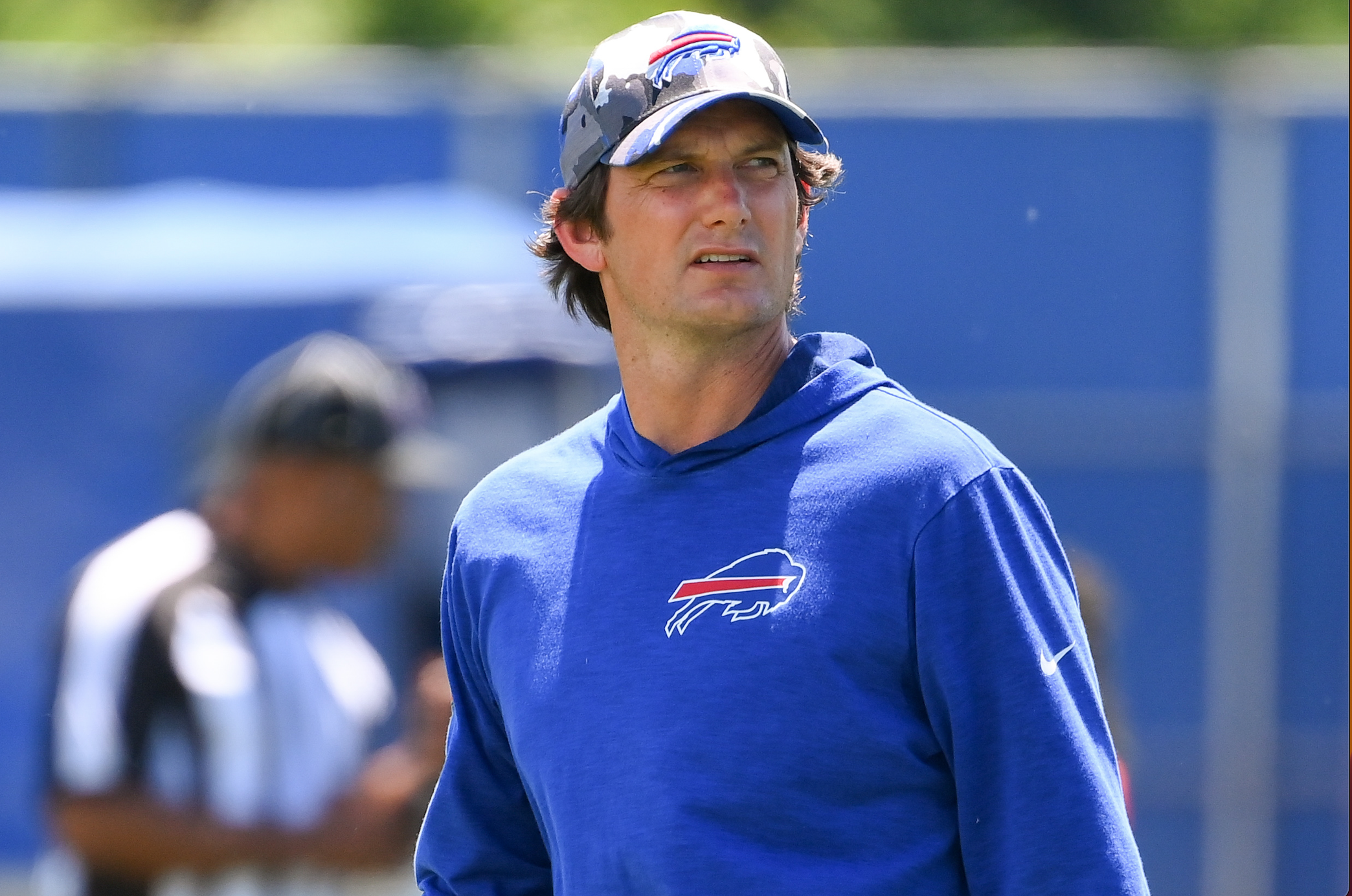
Offensive Philosophy
From my perspective, the easiest way to define each offense is as follows: Daboll’s offense would work down the field, mixing short and medium passes with the occasional deep pass. Meanwhile, Dorsey’s offense felt much more ‘boom-or-bust’, with multiple deep shot attempts from Josh Allen on many drives, leading to lots of long touchdowns, but also lots of quick three-and-outs as well.
Dorsey was very much ‘go big or go home’, which isn’t necessarily a bad philosophy when you have an alien at QB. When they succeeded, it was in a drastically big way (see Rams or Titans games), but when they failed, the offense was struggling to get a single first down (See Jets, Browns or Lions games).
1st Downs
Daboll’s offense was slightly more efficient at moving the sticks, gaining 398 first downs (about 23.4 per game), compared to Dorsey’s 367 (22.9 per game). Of Daboll’s 398 first downs, 236 came from pass plays, or about 59.3%. Dorsey had a similar 57.8% of his first downs come from pass plays.
Conclusion:
No major difference between offenses when it comes to gaining a first down. Both averaged about 23 first downs per game, and had just under 60% of those first downs come on passing plays.
Scoring
Although Daboll had one extra game, his offense scored six more touchdowns than Dorsey’s, with 56 in 2021 (about 3.29 TDs per game) compared to 50 in 2022 (about 3.13 TDs per game). The difference for Daboll came through the ground game, with Buffalo recording 20 rushing touchdowns with Daboll vs 15 under Dorsey.
Conclusion:
Daboll’s offense scored touchdowns more often than Dorsey’s, due to Daboll’s ability to unlock the ground game late in the 2021 season.
An Average Drive
Daboll’s offense averaged more plays per drive (6.32 vs 6.25), while Dorsey’s averaged more yards per drive (37.1 vs 34.8). Dorsey’s offense either stalled quickly, or gained big chunk yardage, which is why his offense averaged less plays but more yards.
Conclusion:
Dorsey’s offense averaged more yards per drive than Daboll’s because ultimately, the reward for success is greater under his offensive philosophy. However, Daboll’s drives lasted longer (more plays per drive), because of his consistent approach.
Conversions
Dorsey’s offense was about 50% on third down conversions (97/193), compared to Daboll’s about 46% (103/222). Similarly, the advantage goes to Dorsey for fourth down conversions at about 54% (7/13), compared to Daboll’s 50% (11/22).
Conclusion:
Dorsey’s offense was better at moving the chains on 3rd and 4th down.
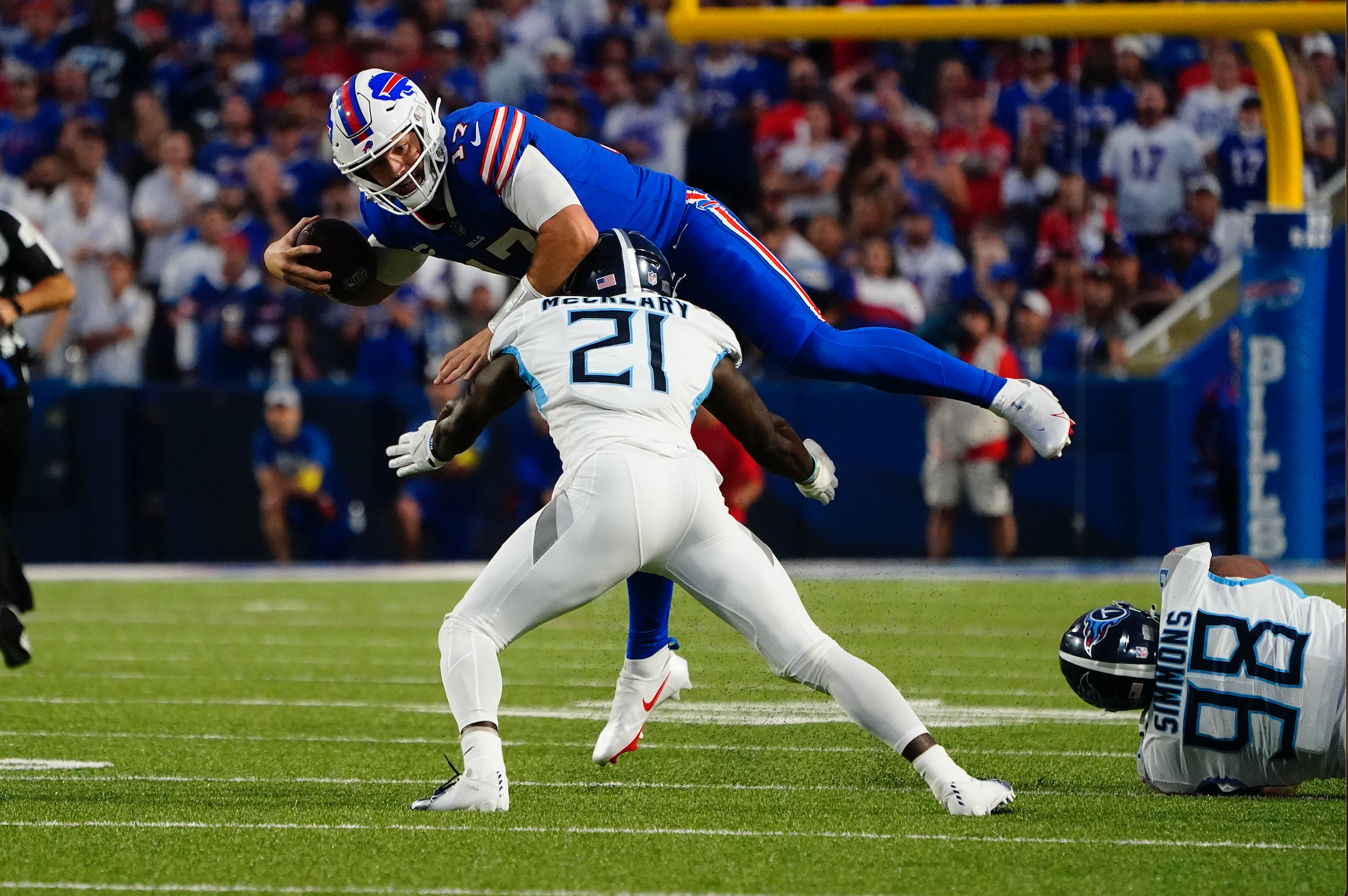
Red Zone
A big complaint in 2022 was the failures in the red zone, with Dorsey’s unit converting touchdowns on about 60% of red zone drives (35/58). However, Daboll wasn’t that much better in 2021, with a conversion rate of about 62% (48/77).
Now the big difference here is the number of total attempts in the red zone, with Dorsey’s 58 (about 3.63 per game) compared to Daboll’s 77 (4.53 per game). So Daboll’s offense had nearly an entire extra drive enter the red zone on a per game basis.
Again, this reinforces the point regarding their opposing offensive philosophies. Dorsey’s offense was more about the big play, meaning less drives had snaps inside the 20 yard line. With 35 of Dorsey’s 50 touchdowns coming from the red zone, 30% of the team’s touchdowns were greater than 20 yards.
Meanwhile, Daboll’s drives were focused on consistently moving the ball downfield, leading to more chances from inside the 20. About 14% of his touchdowns came outside of the red zone, about half of what Dorsey’s 20+ TD percentage was.
Conclusion:
The red zone is the most likely place to score a touchdown, that’s why there’s an entire program every Sunday dedicated to simply watching teams who are in the red zone. Even if the conversion percentages were similar, Daboll consistently put his offense in a likely scenario to score, giving him the nod in the red zone category.
Josh Allen
The Bills have been blessed with one of the best QBs in the NFL leading their team. However, when analyzing his stats under both coordinators, it’s obvious one set him up to succeed more than the other. And I will note, the stats for 2022 can be taken with a grain of salt, given Allen’s UCL injury.
Allen averaged 267.7 yards per game under Dorsey in 2022, compared to 259.2 yards per game in 2021 under Daboll. Similarly, Allen averaged 2.19 passing touchdowns per game under Dorsey, compared to 2.12 under Daboll.
So, Allen threw for more yards and touchdowns under Dorsey, case closed…right?
Well, for starters, Allen was sacked more times in 2022 (despite less games), and had a higher interception percentage. Not to mention, we’ve already established that Daboll’s offense was more consistent at gaining yards, scoring touchdowns, and converting in the red zone. What Bills fan wouldn’t take better production from the offense AND having some of the pressure taken off of Allen at the same time? That’s essentially Daboll’s offense in a nutshell when comparing it to Dorsey’s.
So even though Allen did better individually in 2022, Daboll’s offense took some of the load off of the star QB and was actually able to achieve higher efficiency as a result. For those who read this as, “the offense did worse when Allen was depended on more”, that shouldn’t be your interpretation.
Football is a challenging game, filled with an insane amount of variables on every play, leading to different responsibilities for each player, and different outcomes on each play. While Allen should absolutely be the focal point of the offense, anything a coordinator can do to make his job a little easier should not be considered a knock on the QB. Rather, it should simply be taken as a compliment to the play caller, in this case being Daboll.
Conclusion:
While Dorsey had Allen put the team on his back, Daboll lightened the load for the QB, while maintaining a better offense statistically, giving him the nod in this category.
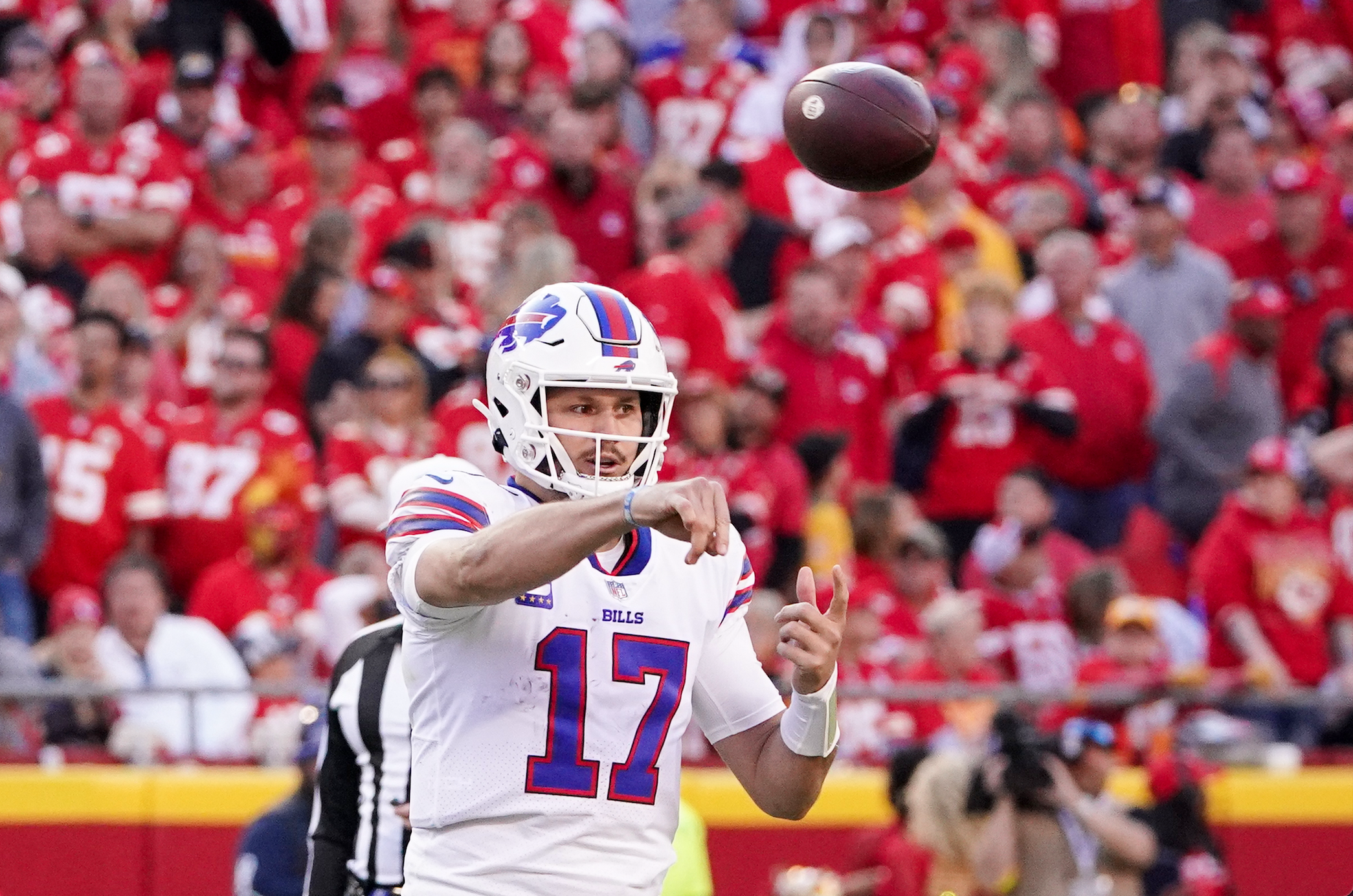
Air Yards
The stats on Allen’s air yards paint the picture of this differentiation in offensive philosophy. Air yards are how far the ball travels from the line of scrimmage until it connects with the receiver. Under Daboll, Allen averaged 8.2 air yards per attempt, compared to Dorsey’s 9.2.
Conclusion:
Allen was throwing the ball farther downfield under Dorsey than Daboll.
YAC
Coming into 2022, it felt like all offseason the offense was preaching “yards after the catch”. Daboll’s offense managed 1,743 YAC in 2021 (102.53 per game). Alarmingly, Dorsey’s offense was worse in 2022, with 1,592 YAC (99.5 per game). And while the per-game numbers seemingly make the gap look minimal, the fact that an area of emphasis throughout the offseason actually declined in the following season is a cause for concern, no matter how small the gap.
For comparison, Patrick Mahomes earned 2,853 of his passing yards from YAC, and Joe Burrow earned 2,156 of his passing yards from YAC. Jalen Hurts, Justin Herbert, Aaron Rodgers, Tom Brady, and Kirk Cousins (just to name a few) also all had more YAC yards from their receivers in 2022 than Allen.
So, why the struggle for Buffalo’s offense to gain YAC yards?
Well, it comes down to two things. Firstly, the types of receivers the Bills have. Stefon Diggs may be the best route runner in the NFL, and is great at constantly creating great separation between him and defenders. However, that’s pretty much the end of the list in terms of elite route runners the Bills have.
Most catches from Gabriel Davis are contested, as he’s more of a 50/50 guy than a separator. The bigger issue is play calling. It’s difficult to get YAC yards when many passes are going towards the sideline (can’t run after the catch if you’re out of bounds), or deep down the field (which means there’s physically less yardage to be gained post-catch as the receiver runs closer to the end zone before he has the ball).
Dawson Knox is known for running over defenders, but it felt like he was used sparingly throughout drives until the red zone (and even that didn’t come until later in the season). Isaiah McKenzie is known for his speed, yet the offense struggled to incorporate jet sweeps and screens efficiently.
Not to mention, the Bills made it a point of emphasis to add receiving backs to the mix, almost signing JD McKissic, signing Duke Johnson, drafting James Cook in the second round, and trading for Nyheim Hines at the trade deadline.
However, all those possible mediums for YAC yards combined for just 28 catches. Derrick Henry had 33 receptions, and he is the farthest thing from a receiving back! Who led the team in YAC per reception for players with 10+ catches? That would be rookie Khalil Shakir. For a team that wants YAC, it seems like Shakir should be getting more than 20 targets in a season, and the pass catching running backs added should be seeing more than 28 total catches.
Conclusion:
Although YAC wasn’t great under Daboll, it was better in 2021 than 2022, so nod to Daboll.
Play Calling
Pro-Football-Reference lists passing stats for RPO (run-pass-option) and play action plays, both of which can significantly make life easier for a QB. Based on the direction of the analysis so far, it shouldn’t be shocking to learn that Daboll was more efficient within both of these categories.
Think of an RPO play the Bills ran in 2022 (if you can). I’m willing to bet almost everyone pictured Allen throwing a slant to Diggs over the middle with #14 being the single receiver on his side of the formation. The Bills ran just 69 RPOs in 2022, with many of those attempts being that exact play. It seemed to be the one “creative” play call in Dorsey’s playbook, except they ran it so much that opposing teams were ready for it (see Alex Anzalone’s thanksgiving interception).
For comparison, Daboll ran 124 RPO plays in 2021. Dorsey’s 69 RPOs resulted in 493 yards, or 7.14 yards per RPO. Daboll’s 124 RPOs resulted in 916 yards, or 7.39 yards per RPO. Not to mention, 96% of Dorsey’s RPO yards came through the air, while 83% of Daboll’s RPO yards came through the air, meaning Daboll’s run-pass options implemented the run aspect more efficiently than Dorsey’s.
Play action plays told a similar story. Dorsey ran 145 PA plays, resulting in 1,235 yards (about 8.5 yards per PA play). Daboll ran 178 such plays, resulting in 1,643 yards (about 9.2 yards per PA play). The idea of play action plays is to trick the defense into believing the offense is executing a run play. So you could say that PA plays…make the QB’s life easier (see where I’m going with this). It also adds a wrinkle of creativity and non-tradition than simply dropping back to pass.
Conclusion:
Daboll called more creative/nuanced plays at a higher rate, and averaged more yards per play on both RPOs and play action – advantage Daboll.
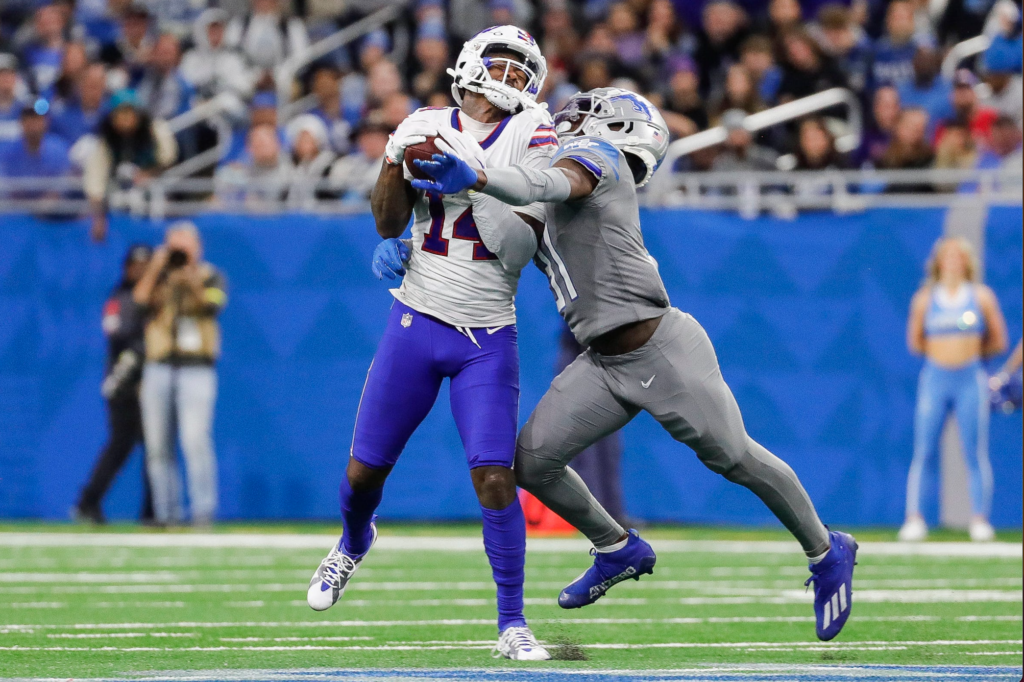
Overall Conclusion
Transitioning from Brian Daboll to Ken Dorsey was a downgrade. This was nearly a certainty entering 2022. The question was, by how much? Dorsey was seemingly groomed for several years to take over as OC, was endorsed by Allen, and had an elite offense in his control.
On the surface, the stats look similar (passing yards, touchdowns, first downs, etc). However, Dorsey made Allen’s job as QB much more challenging, essentially putting the entire offense’s eggs in #17’s basket. And while this isn’t a horrible strategy when you have a top three QB, it isn’t sustainable for a 17+ game season.
Not to mention, among the elite QBs in the NFL, Allen was asked in 2022 to do arguably the most, with arguably the least. Plenty of people have analyzed the lack of receiving weapons and adequate blockers for Allen, especially compared to the other elite offenses in the NFL.
That, coupled with Dorsey’s reliance on Allen to play “hero-ball” or “make something happen” can lead to disaster very quickly. And while the offense certainly had its struggling moments, this was still a top 10 unit in almost all statistical categories. I see that as a major accomplishment for Allen, in spite of the play calling from Dorsey.
Solution
It would be hard to find a Bills fan that doesn’t want the team to focus on upgrading on the offensive side of the ball. Bringing in a WR that is a polished route runner, whether it be through free agency or the draft (or both) is a must for this offseason. Plus, several starting offensive linemen currently on the team leave something to be desired, and the team should look to upgrade there as well.
But, let’s not forget that the Bills still do have several adequate weapons at their disposal. Diggs is obviously a top five receiver, and Davis is a great deep threat to have in your arsenal, he’d just be better suited as a WR3 than a WR2.
I believe Dawson Knox has the potential to be a top five tight end in the NFL, based on his athletic ability and rapport with Allen, but he simply needs to be utilized differently. I like the nuance that James Cook and Nyheim Hines add to the offense, if only the play calling would implement them more.
While the offense certainly is missing pieces, I don’t believe it’s in as much trouble as many would like to think. By the start of the 2023 season, Dorsey (hopefully) will have all of the pieces necessary, and will need a revitalized playbook to maximize talent and efficiency for the offense.
Editor’s babble: This is just a terrific objective comparison of Daboll vs Dorsey, Obviously Dorsey gets a positive grade for a first year OC. Next season Dorsey must show improvement. I wonder how many times Allen called different plays at the LOS under Dorsey vs. Daboll. I would bet Josh felt more comfortable doing his own thing under Dorsey because they had a different relationship when Daboll was OC. Perhaps Allen needs to feel less comfortable going off script next season? Or is the script the problem? We shall see. Love Colin Richey’s work. You can also find him on Twitter @whatthef00tball.

BuffaloFAMbase.com is sponsored by 26 Shirts
Every Monday, we launch a two-week campaign of a new Buffalo-themed t-shirt design. Every purchase results in a donation to a local family in need. After the campaign ends, the shirt is typically retired. A new design is released, and a new family benefits from your fandom!


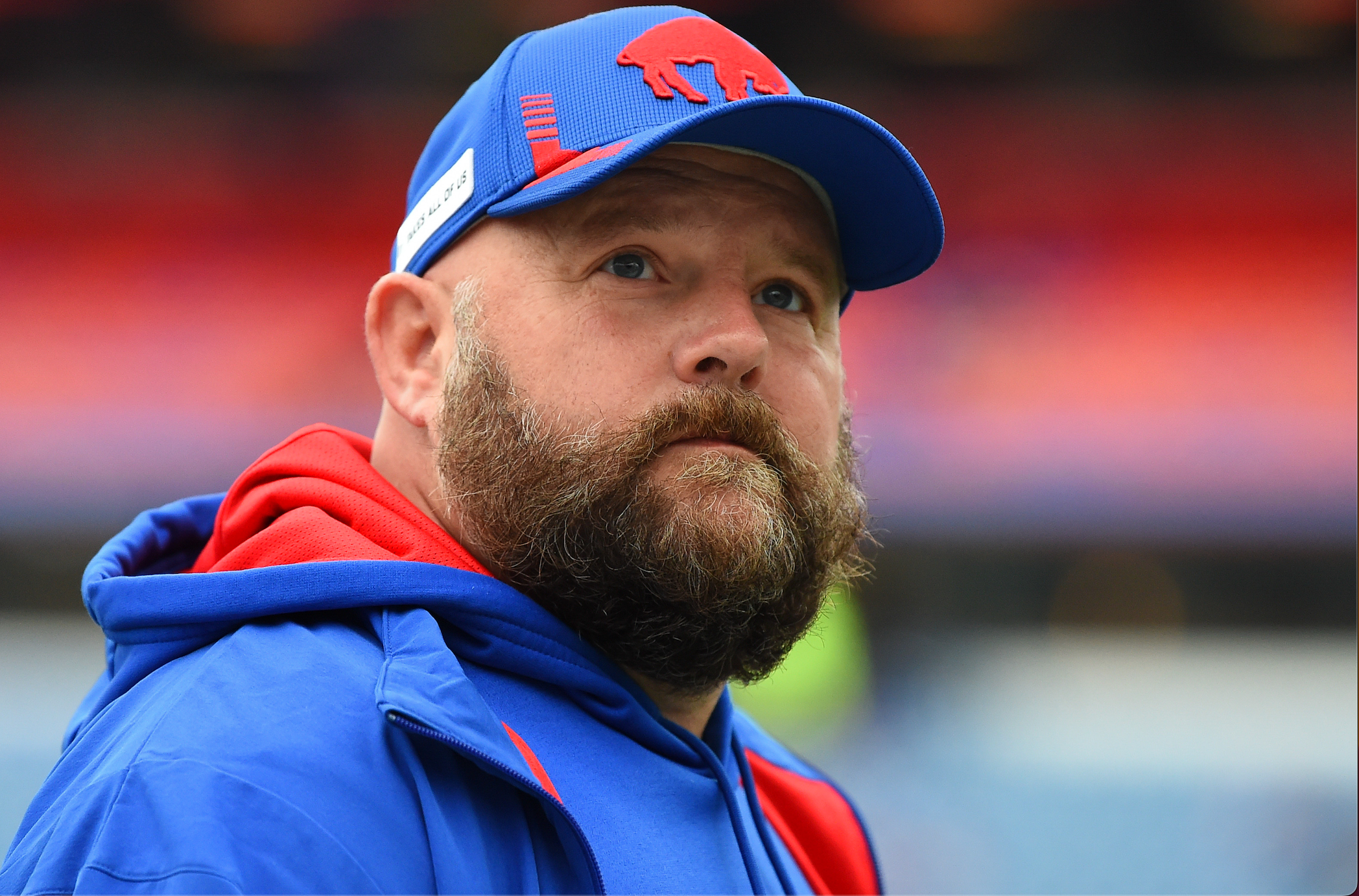
As a MAFIA member I must say I don’t understand why you don’t work within the organization…This was spot on…U can definitely appreciate the comparison if you lived the rebuild…I like how u mentioned that basically the “world” acknowledged there weaknesses…Gonna be fun to watch a season where it’s “On Beane and the coaches ” to get it right……
I just want to see some more screen plays to Hines…. Please.
Really well done piece. Just remember to use the word “fewer” instead of less when you’re discussing things that can be counted. As in fewer drives, fewer snaps etc.
Great read. One more stat I’d live to see is clock possession under each. Because of Dorsey’s desire for fast deep ball play, there’s a bigger stain on the defense. The Bills just didn’t utilize the run game enough. Clear with the comparative of RPO.
Outstanding diagnosis, took in analysis of offensive football. My observations agree with the conclusions, but that was just an accident on my part. Thank you Collin Richey for a diligent analysis.
Dorsey, a 2nd string OC- need a seasoned creative play caller